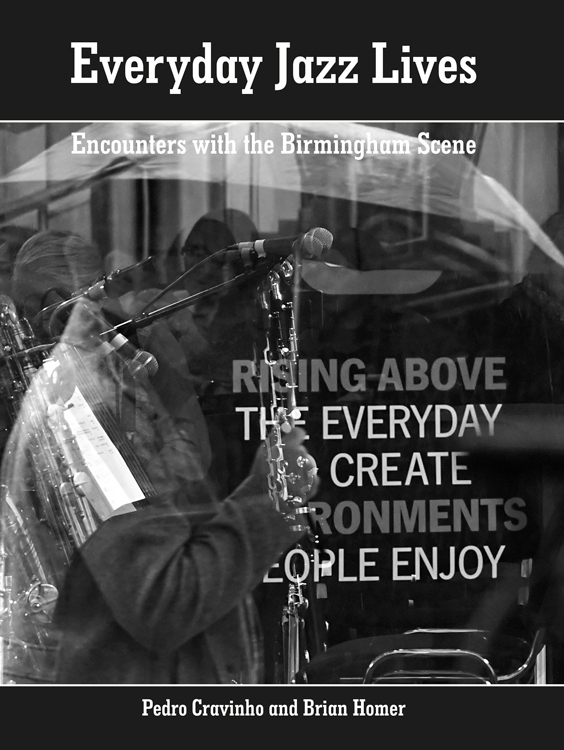Inspiring Older Readers
 posted on 08 May 2024
posted on 08 May 2024
Everyday Jazz Lives: Encounters with the Birmingham Scene by Pedro Cravinho and Brian Homer
There is something magnetic about the relationship between jazz, jazz musicians and photography. I’ve accumulated a small library of books that capture the jazz musician in action, or backstage, and all of them exude an impossible glamour for me. It’s especially true of those that have been shot, printed or reproduced in that luminescent black and white that seems to be most compatible with the essence or philosophy of jazz and all it stands for.
Although we’re perhaps accustomed to seeing the greats – Miles, Coltrane, Dizzy, Herbie Hancock et al. – captured in photographs as if they lived their whole life on stage or backstage, the truth is that for them and all other jazz musicians, there’s another life to be led in the ‘real world’. And that other life can be hard work, a struggle to supplement what can be a very meagre income from their music – rich jazz superstars are a scarce commodity.
Working together since before the Covid pandemic, jazz academic, Dr Pedro Cravinho and freelance photographer, Brian Homer have explored the dual lives of some of Birmingham’s jazz musicians in order to explore what they are doing when they’re not thrilling an audience with their chosen brand of jazz.
The book contains profiles of 26 musicians – a real spectrum of the jazz form – and each artist is given a double page spread. First, we see them as performers and we get a pen portrait of their career to date while on the facing page we see them in their ‘real world’ work persona with some personal comments about the challenges and potential compromises – and satisfaction – that comes with that employment.
The photography is, of course, black and white – which works as well for the non-jazz world as for those where the subject is playing. The photographs here have all the quality you'd associate with the work of Brian Homer but I think that it would have been nice to have gone for bigger, punchier prints to capitalise on the power of the images. Maybe it would have been possible to either set the text on a separate page or maybe slightly reduce the size of the font?
But that sounds like a carping sort of criticism and I certainly don’t want the overall impression to be anything other than positive. This is a fascinating window on a world of creativity that we tend to otherwise ignore and it’s also a look at the world of jazz where the stereotypes – the quasi-mystical image of the jazz musician and the often associated machismo that attaches itself to those images – can be challenged and a more three-dimensional image allowed to emerge.
For a closer look at the book and to order your copy go to https://everydayjourneys.co.uk/projects/everyday-jazz-journeys/everyday-jazz-lives/
and see for yourself.
Terry Potter
May 2024